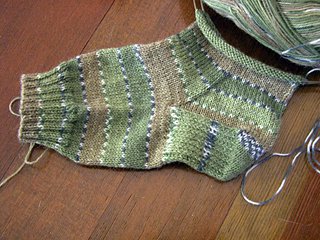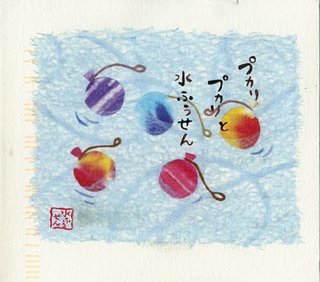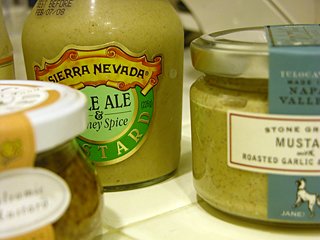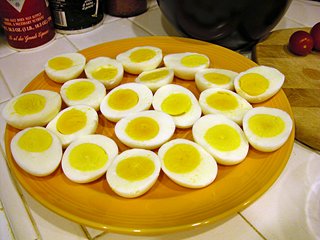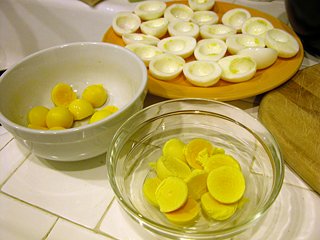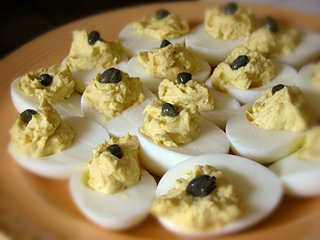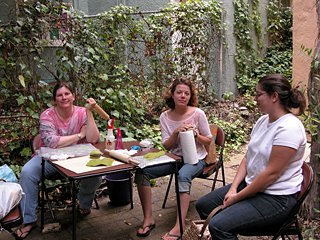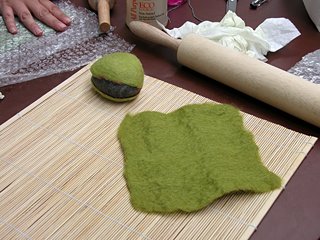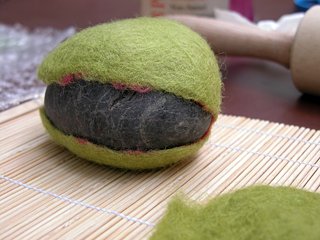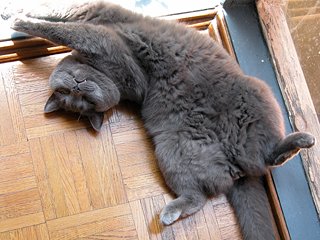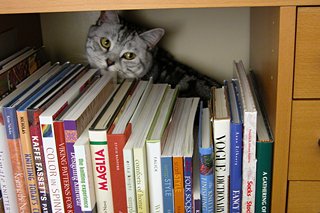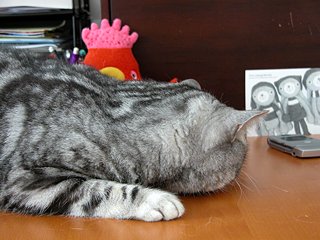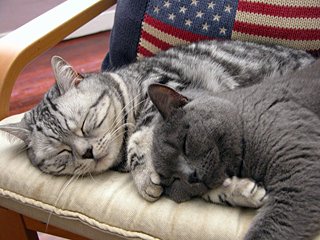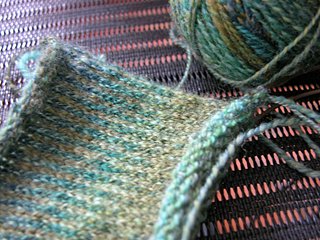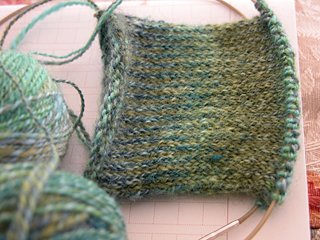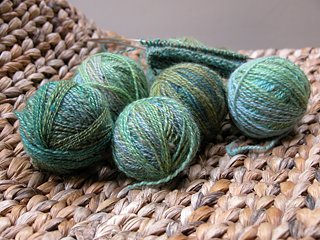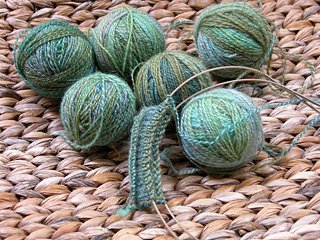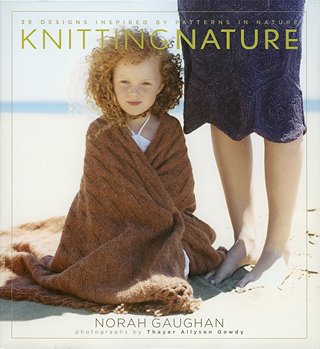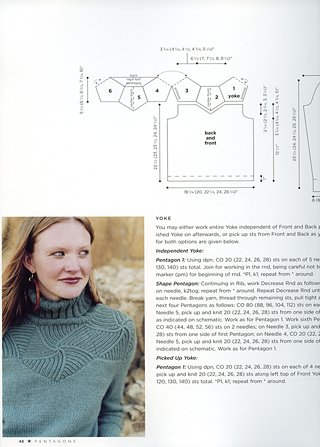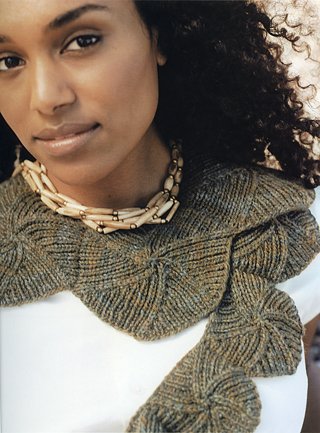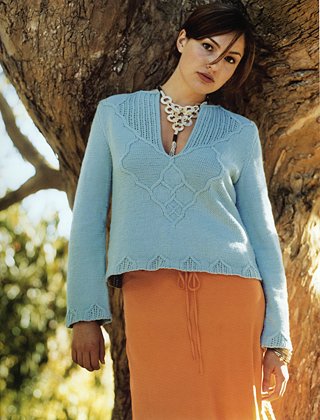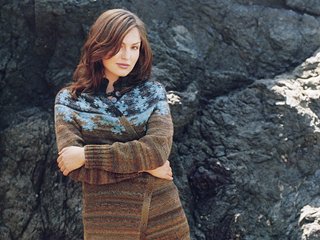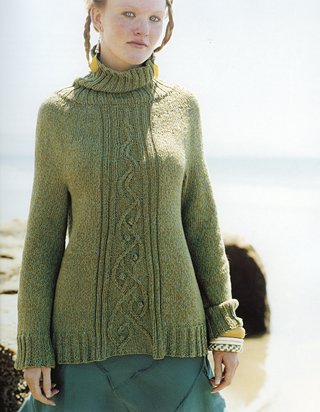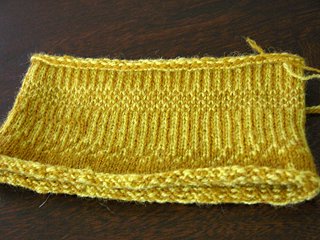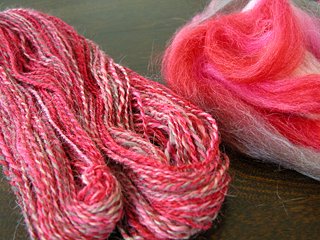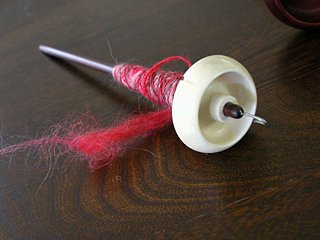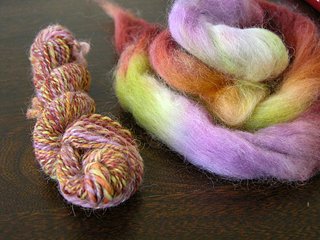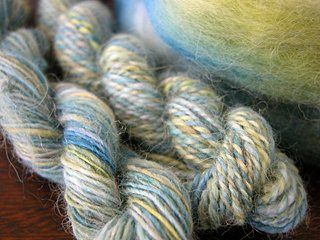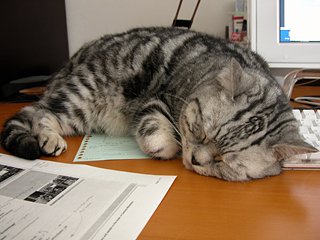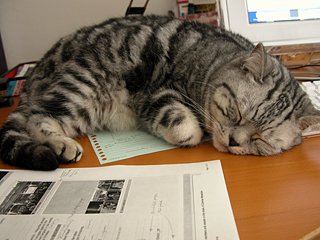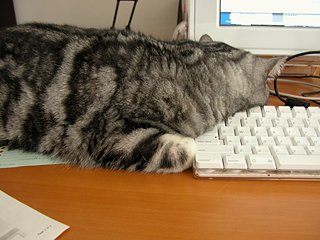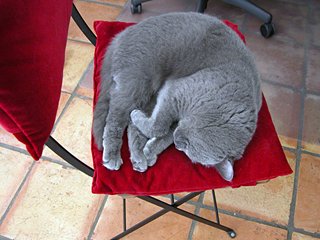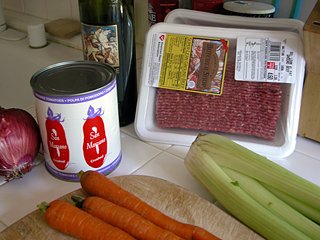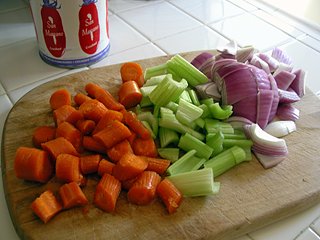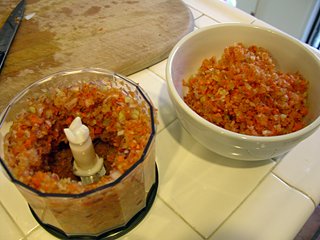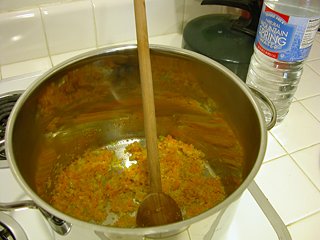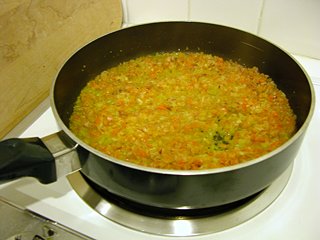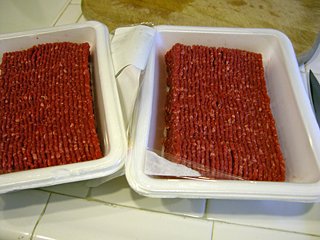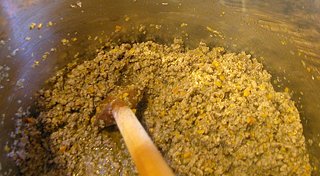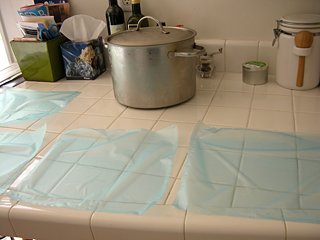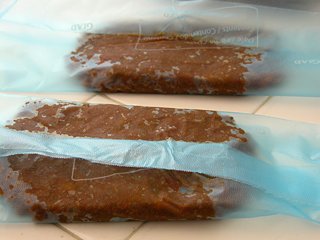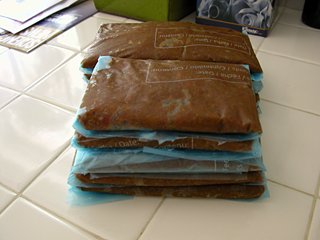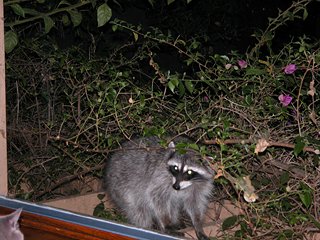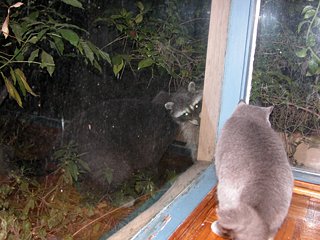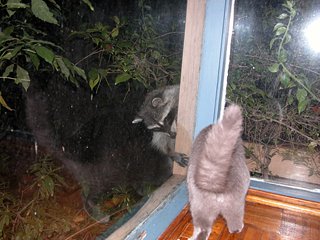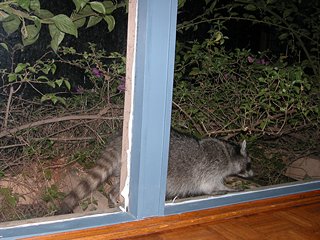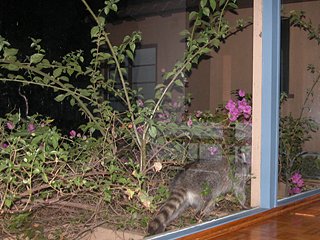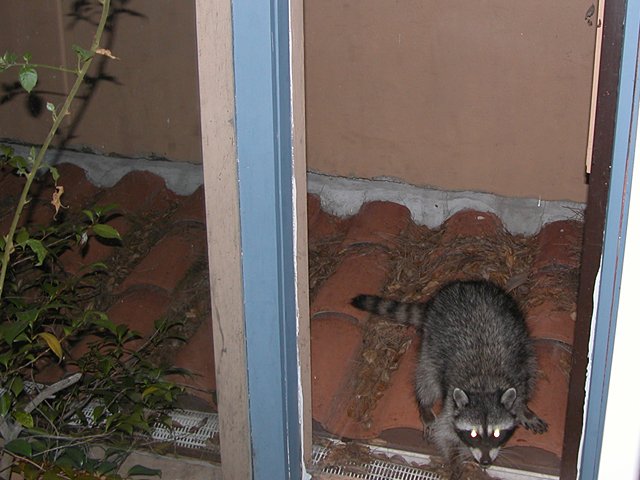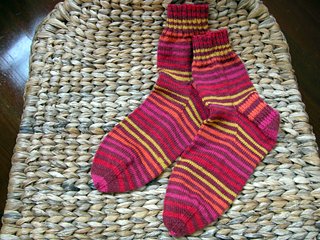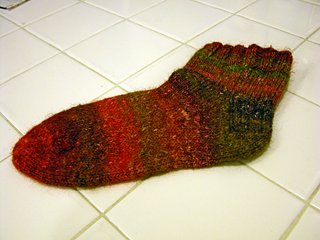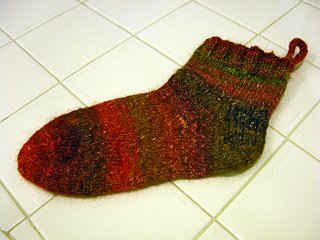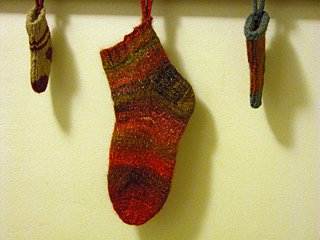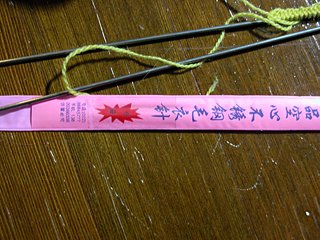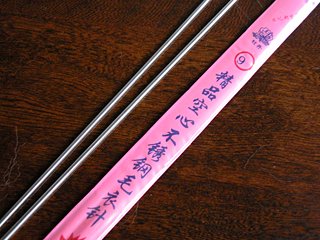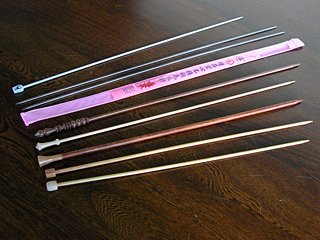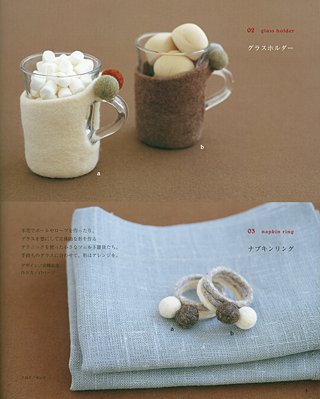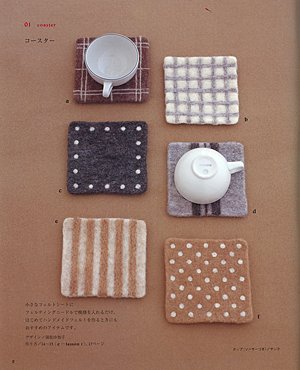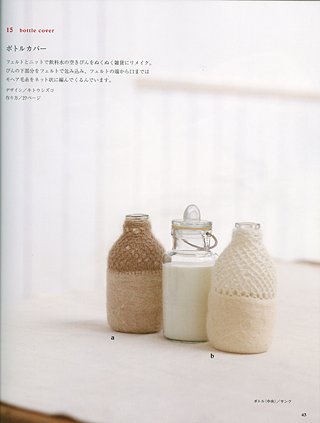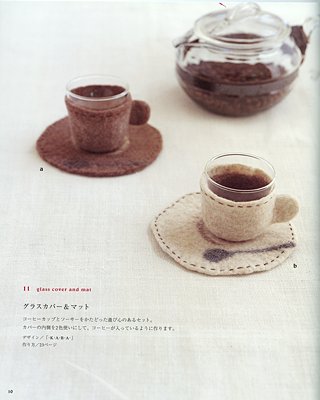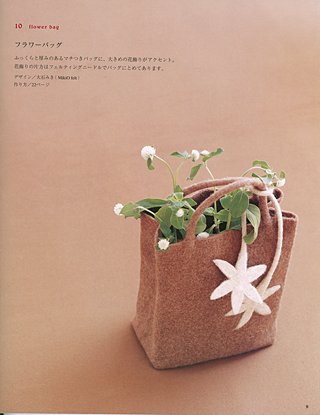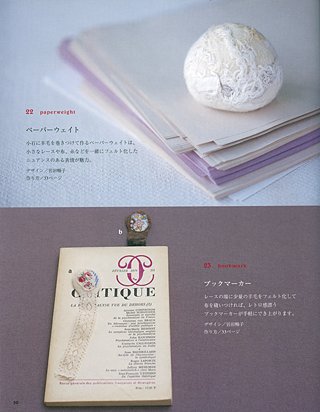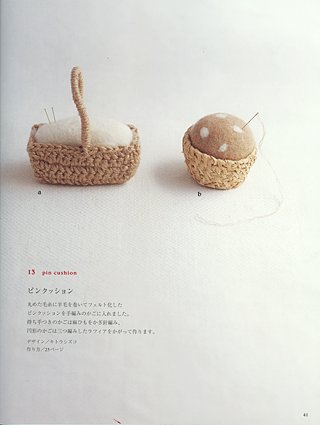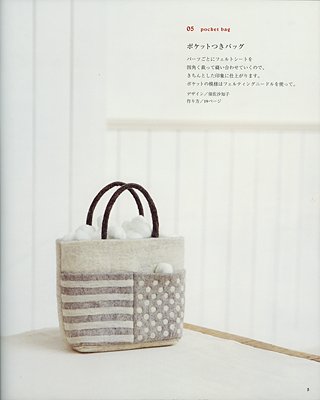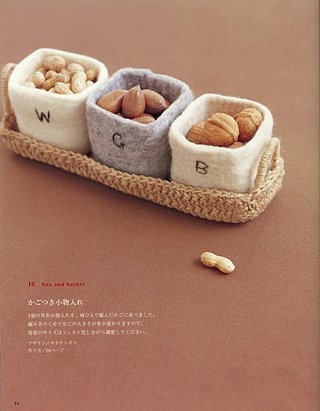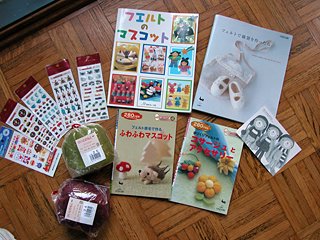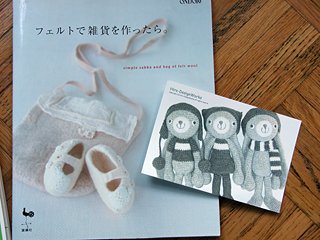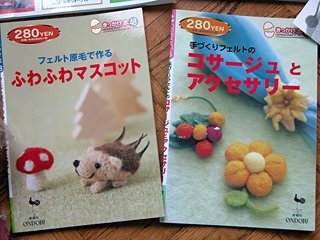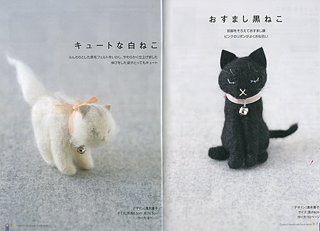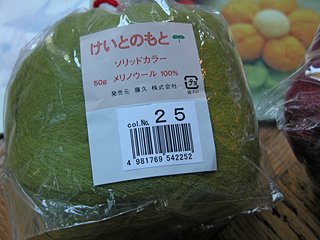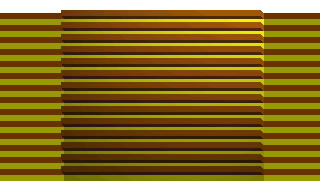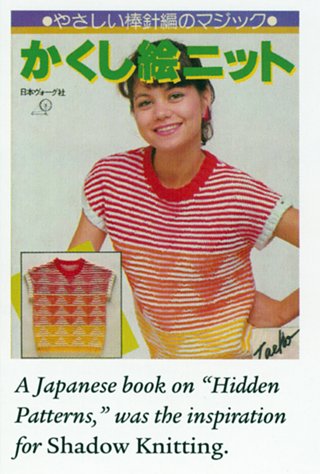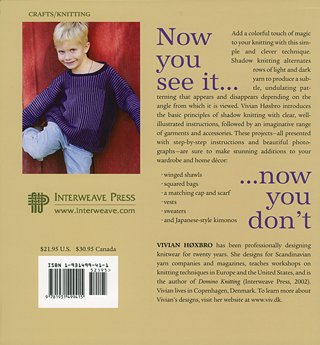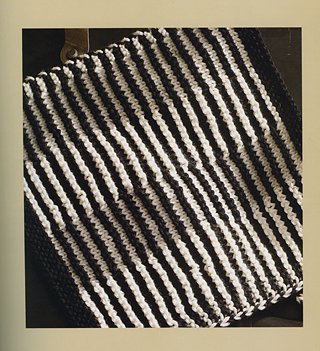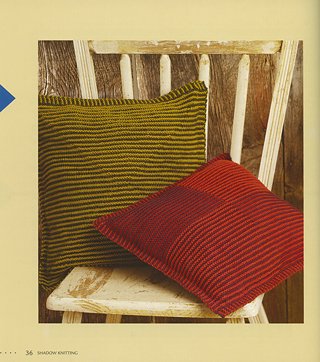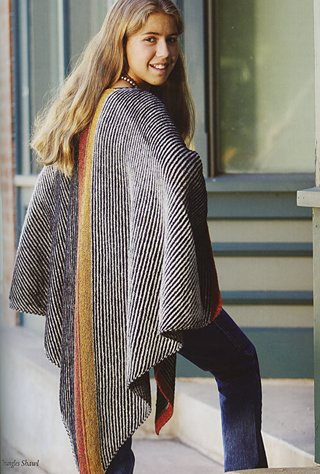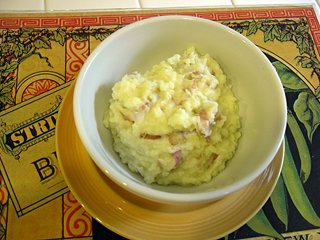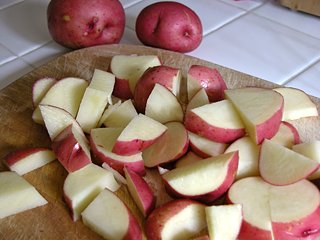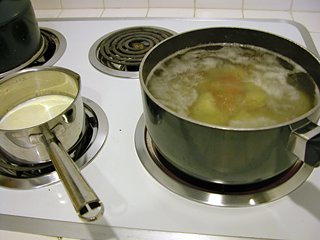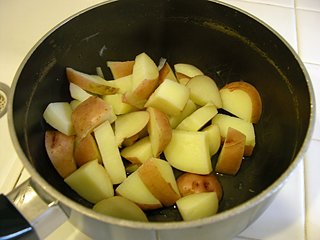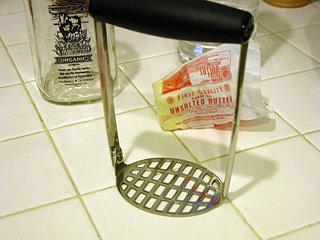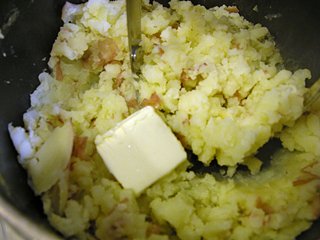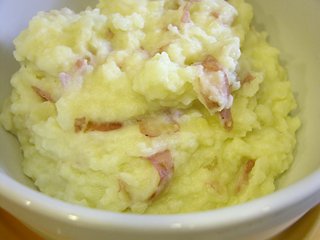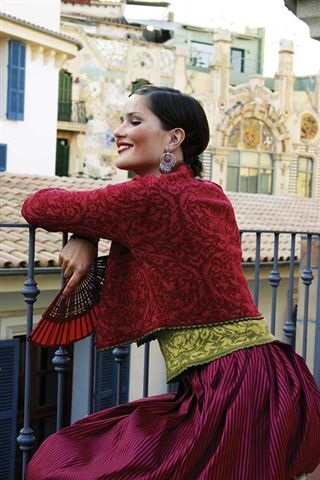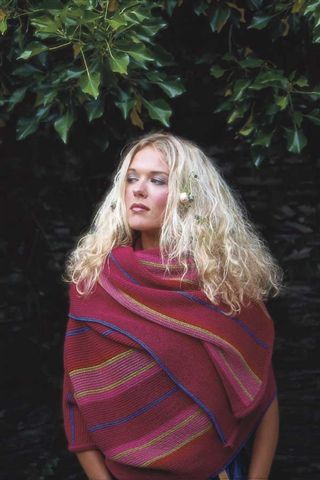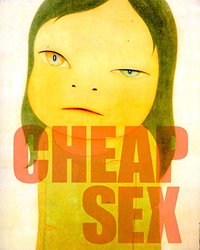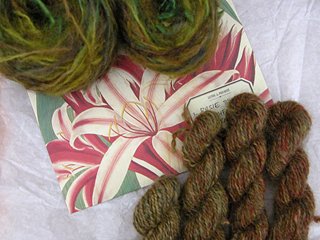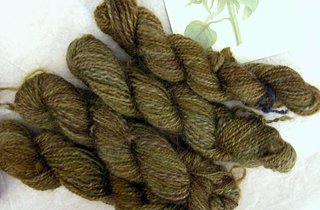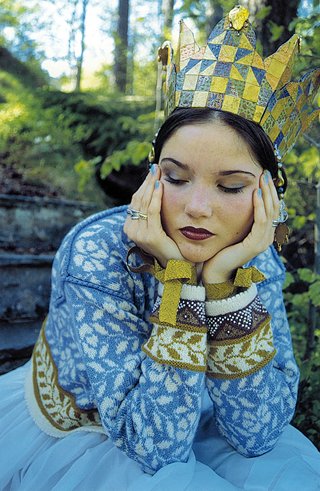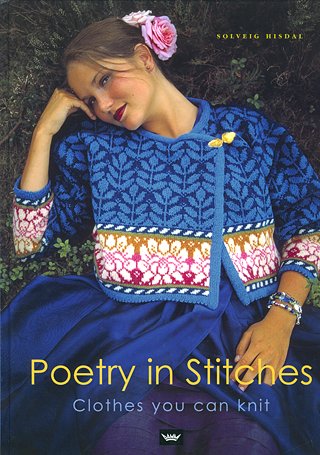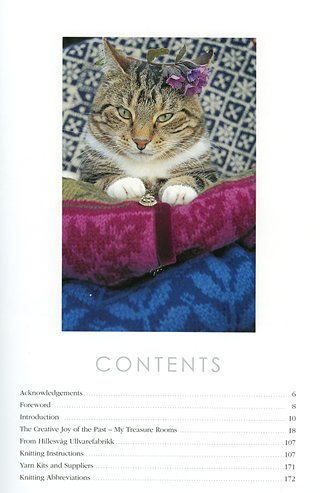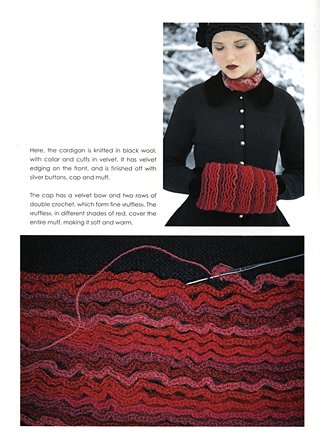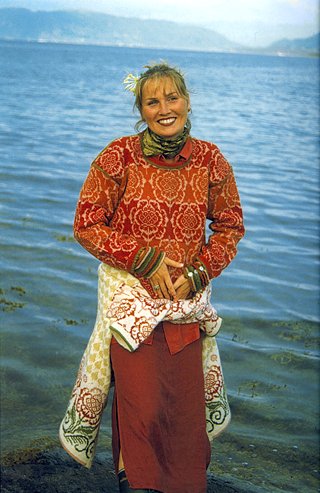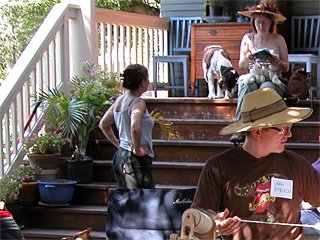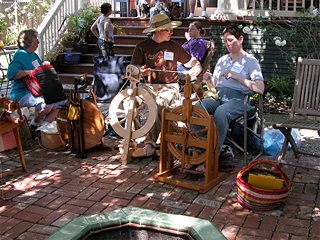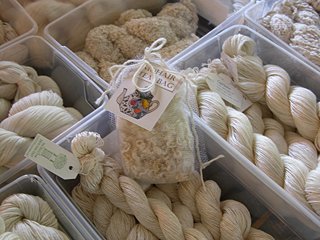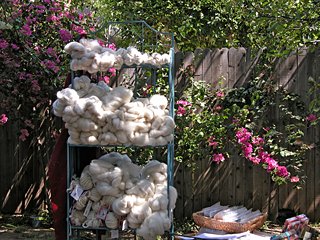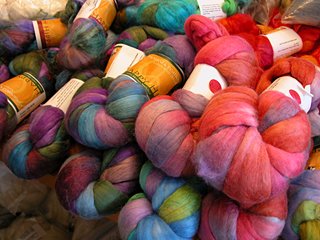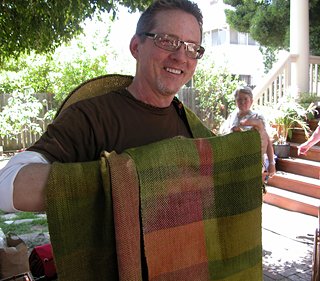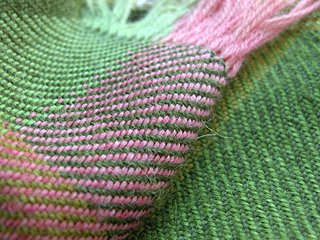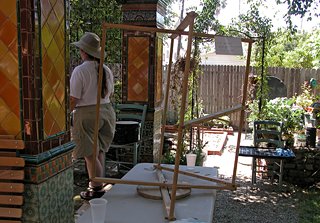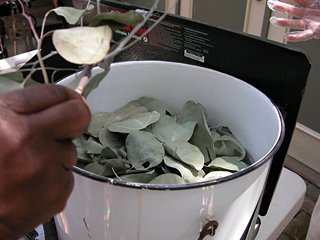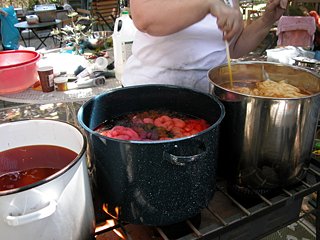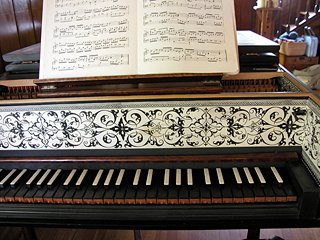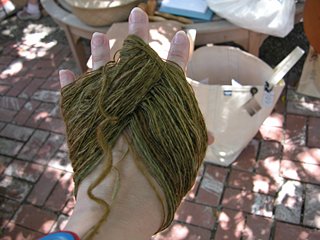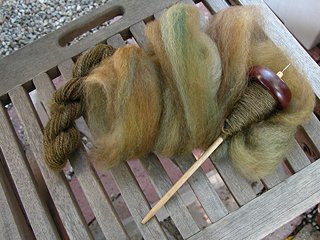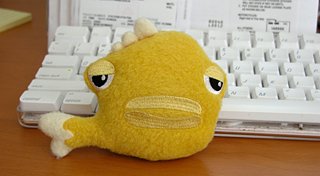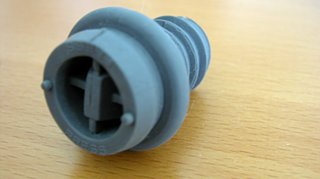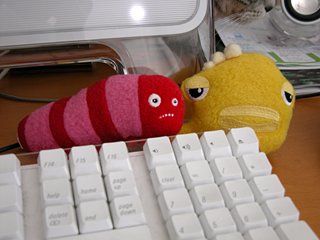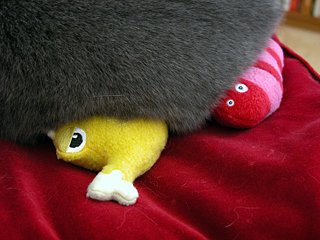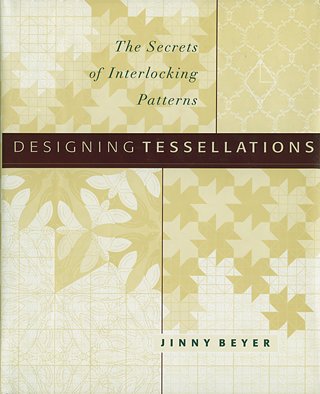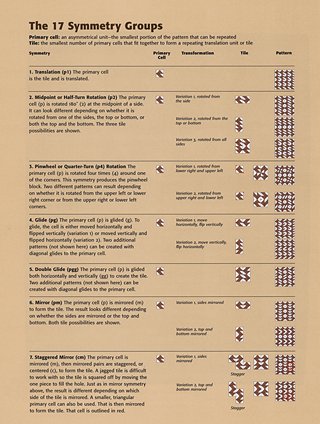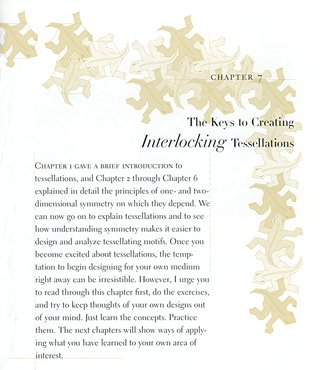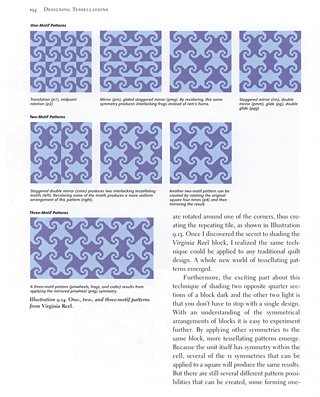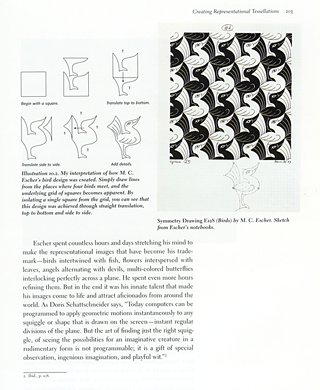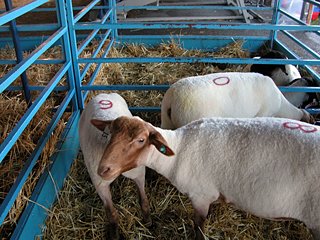
 If you are into fiber and have never been to the New York Sheep & Wool Festival, a.k.a. Rhinebeck, consider going. Rhinebeck is a town in Dutchess County, upstate New York, where the fair takes place every year on the third weekend in October. This is one of largest events of its kind, second in the U.S. only to the Maryland Sheep & Wool Festival. I've never been to Maryland, but I've heard from many spinners who have been to both fairs that, from a spinner's perspective, Rhinebeck has more to offer.
If you are into fiber and have never been to the New York Sheep & Wool Festival, a.k.a. Rhinebeck, consider going. Rhinebeck is a town in Dutchess County, upstate New York, where the fair takes place every year on the third weekend in October. This is one of largest events of its kind, second in the U.S. only to the Maryland Sheep & Wool Festival. I've never been to Maryland, but I've heard from many spinners who have been to both fairs that, from a spinner's perspective, Rhinebeck has more to offer.
I've been to Rhineck twice, in 2002 and 2005. On the first trip I spent most of my time taking workshops and missed out on a lot of what was happening on the fair grounds. Last year, I decided to forget about workshops and see everything else.
The fair is a two-day event and an almost overwhelming sensory experience. As you walk past the entrance, you are flooded by the colors of fiber and finished producs, the sound and smell of the animals, the almost tangible fog of the barbecues, and the loud murmur of a very dense crowd. The past year, an insistent rain added mustiness and the scent of wet grass to the crisp air. And of course, by the time you get to the fair you've already been driving through the glorious countryside going ooh and aah looking at the fall foliage in various stages of gold and red. Technically, Dutchess County is not part of New England, but think New England when trying to picture the scenery. There's a reason they chose the third weekend in October for the festival. This is the best time of year, when the leaves turn to their most glamorous colors and professional photographers come here to shoot next year's calendars.
Since this was not my first visit, I made a beeline for a couple of vendors I wanted to hit right away. My first stop was at the nice folks who make the Journey wheel and, in my opinion, the best hand spindles on the market, known as Bosworth spindles or simply Bossies.
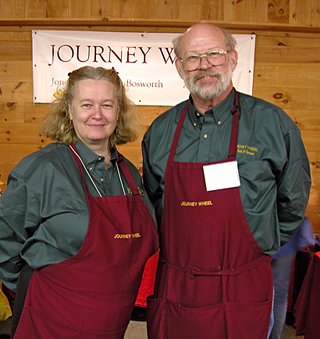
Jonathan and Sheila Bosworth.
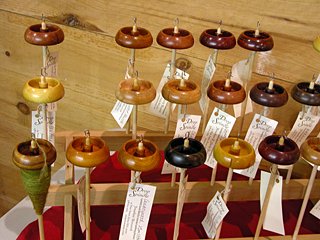
The beautiful and perfectly balanced Bossies.
Spread over many buildings were booths with equipment and supplies for spinners, knitters, weavers, felters, and rug hookers. Felting had a much stronger presence than I remembered from my previous visit. I loved the bright felted balls and a village reproduction with all sorts of figurines — farm houses, farm animals, people and, surprisingly, mermaids. Too bad my camera battery was depleted when I saw those.
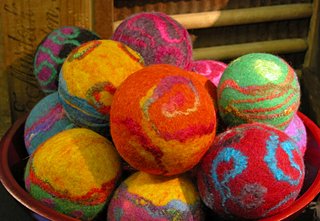
My favorite new find was probably the discovery of another husband and wife team — John and Sarina of Moving Mud — who make beautiful handcrafted glass objects. On display were a wide variety of buttons in different shapes and sizes, some beautiful closures and a pair of glass knitting needles.
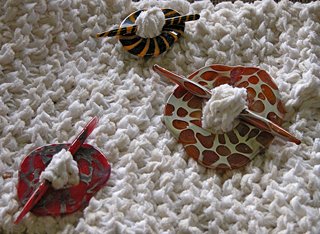
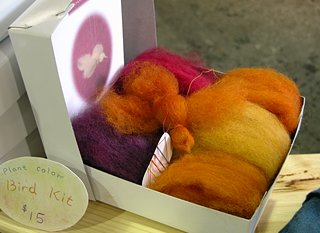
Spinning and felting fibers were all over the place. My favorites are always the fall colors. On both occasions, I stocked up on mohair/wool blend clouds and slivers in autumn hues.
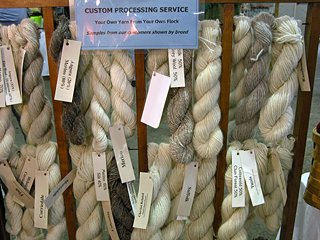
The animals on display included sheep, goat, llamas, alpacas, anad rabbits. They all competed in various categories. The funniest event was the "Leaping Llamas" competition, which saw llamas and alpacas jump an obstacle. Most of the time they weren't even trying and it was hilarious to see how their owners struggled to get them to at least push the obastacle down with their chests and walk through it. I know, I shouldn't make fun of them… I do pretty silly things, too, with my pets.
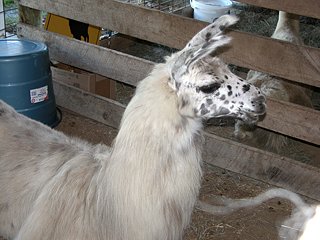
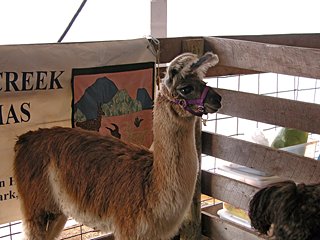
Thsi baby had beautiful eyelashes.
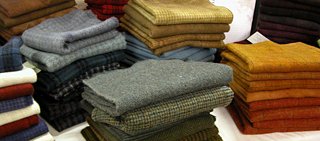
Fabric for rug hooking
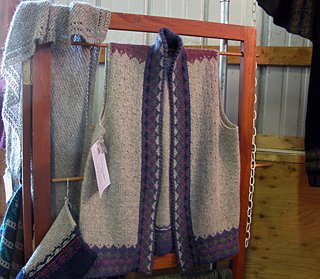
Handknit vest by Margaret Klein Wilson of Mostly Merino.
Workshops + Demos
Workshops covered spinning, knitting, and rug hooking. Events ranged from fleece auctions to fleece-to-shawl competition, to pumpking chucking (throwing huge pumpkins with handmade catapults). Demos involved spinning wheels, looms, rabbit plucking, wine and food tasting, broom making and my very favorite at the end of the second day: falconry.
The People
Ninety percent of the audience, and possibly more, was female. I saw a few women with distinctive head coverings similar to those worn by the Amish. The crowd included home schoolers, farmers, H4 kids, recreational knitters and professional fiber artists. Among them I spotted actress Karen Allen of Indiana Jones fame, who owns a fiber arts boutique in Great Barrington, Massachusetts. It's a beautiful shop with exquisite products, mostly designed by Karen and two other fiber artists. Lots of knitted items and some original felted bags.
Products
Aside from equipment and supplies, the fair offers a wide variety of products such as Orenburg shawls, viking felted hats, gemstones, clothing, and soaps. Not to mention that you can buy livestock. I had to promise Ben I wouldn't come home with a bunny and it was a hard promise to keep.
Other things to see in the area
Some things to know if you plan to go to the New York Sheep & Wool Festival:
- Most people reserve accomodations a year in advance so, if you don't have friends in the area, be prepared to stay quite far from Rhinebeck.
- If you are going with friends (it's so much more fun), make arrangements to meet at specific times and places during the day because cellphone reception on the fair grounds is almost inexistent.
- Planning to buy large or heavy items? Remember that you may not be able to carry them with you on the plane and shipment may significantly impact the base cost. In most cases, grabbing a business card and ordering from home is a wiser choice.
